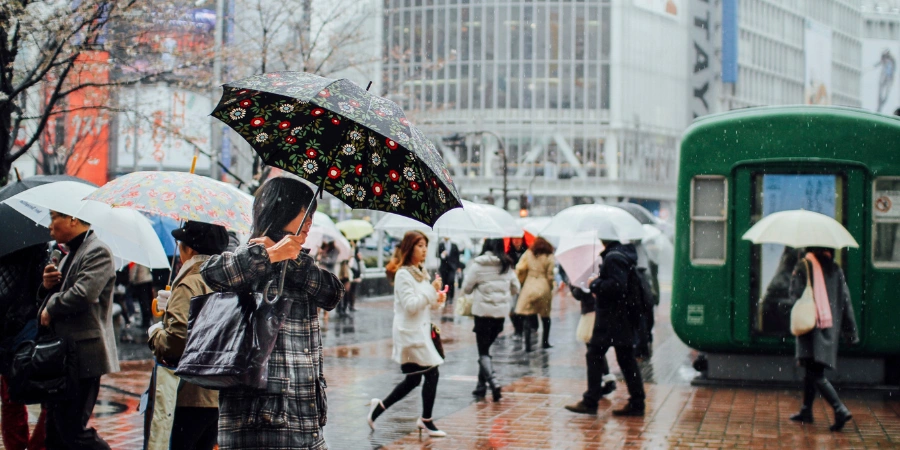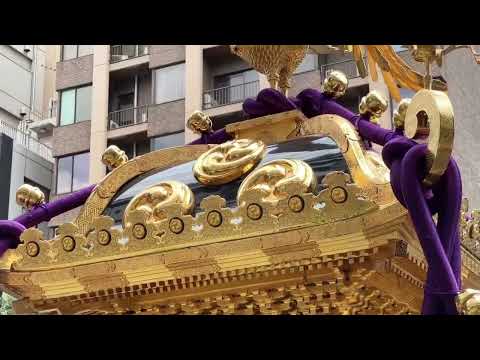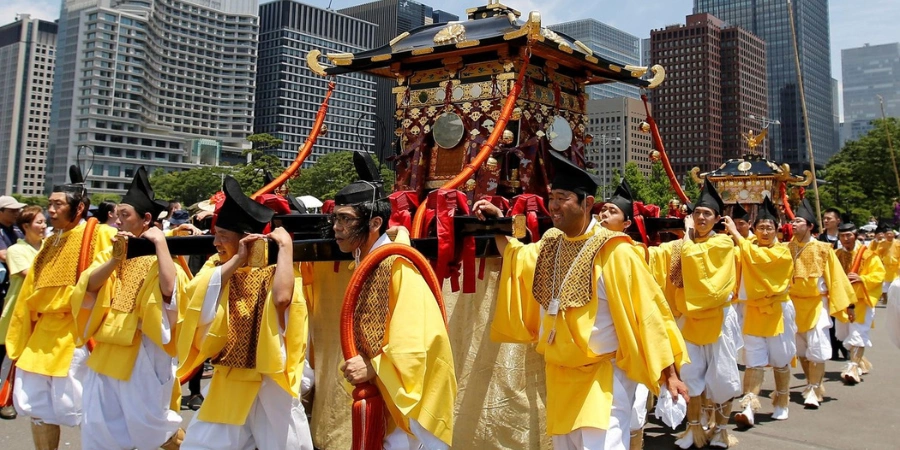🔖 6 min read
June in Japan, traditionally known as Minazuki (“the month of water”), signals the true onset of the rainy season, gradually moving northward. While most of Japan experiences increased rainfall, Hokkaido remains relatively dry, offering an ideal escape for those seeking less rain.
Despite the humidity, June provides a unique, uncrowded experience. It’s a prime time for festivals, from energetic dance parades like Sapporo’s Yosakoi Soran Festival to Kyoto’s serene nighttime Noh performances. The rains also bring out vibrant hydrangea blooms, creating beautiful landscapes, particularly along the Hakone Hydrangea Train route.
Ready to discover a different side of Japan? June offers an authentic and rewarding trip with fewer crowds and unique seasonal beauty. This guide details popular activities, event schedules, and essential travel tips to help you plan your visit.
Planning Ahead: Weather, Outfits, Crowds
10 Things to See and Do
Takigi Noh (Kyoto) – June 1-2
Yosakoi Soran Matsuri (Sapporo) – June 5–9
Tokyo Pride Parade and Festival – June 7-8
Tsukiji Lion Dance Festival (Tokyo) – June 7–9
Sannō Matsuri (Tokyo) – June 7–17
Chagu Chagu Umakko (Morioka) – June 14
Kangensai Festival (Hiroshima) – June 16
Hakone Hydrangea Train (Kanagawa) – Mid-June to Late July
Suigo Itako Ayame Festival (Ibaraki) – Late May to Late June
Expo 2025 Osaka – April 13 – October 13
Planning Ahead: Weather, Outfits, Crowds

Image Credit: Savvy Tokyo
June marks the start of the rainy season in Japan, especially in central and southern regions. Expect occasional showers, particularly in Tokyo, Kyoto, and Osaka. However, rain is usually light and short-lived, and shouldn’t deter your travel plans.
Average Temperatures: 20°C to 27°C (68°F to 80°F)
Humidity: High
Rain Gear: Compact umbrella, light rain jacket
Best Outfits: Breathable fabrics, water-resistant shoes, waterproof jackets/rain coats
June is a sweet spot before the summer holidays begin. Domestic travel is low, and international crowds are moderate. Booking accommodations in advance for major events like Tokyo Pride or Sannō Matsuri is highly recommended.
10 Things to See and Do
Takigi Noh (Kyoto) – June 1-2

Image Credit: Discover Kyoto
Location: Heian Shrine, Kyoto
Entrance Fee: Price varies according to venue, check it here (advance tickets recommended)
Opening Times: 6:00 PM – 8:40 PM (gates open at 5:00 PM)
Takigi Noh is a traditional form of Noh theater performed outdoors by torchlight, creating a mystical ambiance. Held annually at Kyoto’s Heian Shrine, this event dates back to 1950 and aims to make classical Noh performances more accessible to the public. The plays often depict tales from Japanese literature and folklore, offering a glimpse into the country’s rich cultural heritage. Explore more details through an event guide here.
Yosakoi Soran Matsuri (Sapporo) – June 5–9

Location: Odori Park and various venues across Sapporo, Hokkaido
Entrance Fee: Free (some premium seating may require tickets, purchase them here)
Opening Times: Daily events from 10:00 AM to 9:30 PM
Official Website: yosakoi-soran.jp
The Yosakoi Soran Festival in Sapporo is a vibrant celebration combining traditional Yosakoi dance with modern music. It originated in 1992, fusing Kochi Prefecture’s energetic Yosakoi Festival style with Hokkaido’s folk song, “Soran Bushi.” Held annually in early June, thousands of dancers in elaborate costumes, holding wooden “naruko” clappers, transform Sapporo’s streets and stages into a dynamic showcase. Teams from across Japan perform highly choreographed routines, making it a major, spirited highlight among Japan’s June festivals.
Tokyo Pride Parade and Festival – June 7-8


Image Credit: The Japan Times
Location: Yoyogi Park, Tokyo
Entrance Fee: Free
Opening Times: 11:00 AM – 6:00 PM
Tokyo Pride is Japan’s largest LGBTQ+ event, featuring a vibrant parade, live performances, and advocacy booths. Originally known as Tokyo Rainbow Pride, the event was rebranded and moved to June to align with global Pride Month celebrations. It serves as a platform to promote diversity, inclusion, and human rights, attracting thousands of participants and supporters each year. Visit the Tokyo Pride website for schedules, inquiries, and more!
Tsukiji Lion Dance Festival (Tokyo) – June 7–9


Location: Namiyoke Inari Shrine, Tsukiji, Tokyo
Entrance Fee: Free
Opening Times: Varies; main events typically in the afternoon
Official Website: Tsukiji Namiyoke Jinja
The Tsukiji Shishi Matsuri (Lion Dance Festival) is a traditional event held every three years at Namiyoke Inari Shrine. It features large lion-head floats paraded through the streets to ward off evil spirits and pray for prosperity. The festival has deep roots in the local community, reflecting Tsukiji’s history as a bustling market district.
Sannō Matsuri (Tokyo) – June 7–17


Image Credit: Japan Private Tour
Location: Hie Shrine and central Tokyo
Entrance Fee: Free
Opening Times: Varies; main procession on June 8
Official Website: Tenka Matsuri
The Sannō Matsuri is one of Tokyo’s three major Shinto festivals, dating back to the Edo period. A grand procession of mikoshi (portable shrines) and traditional floats through central Tokyo, including the Imperial Palace grounds, is held in even-numbered years. The festival honors the deities of Hie Shrine and prays for the city’s prosperity and safety.
Chagu Chagu Umakko (Morioka) – June 14


Image Credit: Travel to Tohoku
Location: From Onikoshi Sozen Shrine in Takizawa to Morioka Hachimangu Shrine
Entrance Fee: Free
Opening Times: Parade starts at 9:30 AM
Official Website: Chaguuma
Chagu Chagu Umakko is a colourful horse parade held annually to honor Sozen-sama, the guardian deity of horses. Approximately 100 horses adorned with bells and vibrant decorations march along a 13-kilometer route, creating a festive atmosphere. The event celebrates the region’s equestrian culture and agricultural heritage.
Kangensai Festival (Hiroshima) – June 16


Image Credit: The Happy Traveller
Location: Itsukushima Shrine, Miyajima Island
Entrance Fee: Free
Opening Times: Evening; specific times vary
Official Website: Miyajia Site
The Kangensai Festival is a traditional event dating back to the Heian period, featuring a ceremonial procession of boats accompanied by court music (gagaku) on the waters around Miyajima Island. The festival reenacts ancient rituals to honour the deities of Itsukushima Shrine, offering a unique glimpse into Japan’s spiritual and cultural history.
Hakone Hydrangea Train (Kanagawa) – Mid-June to Late July


Image Credit: DiGJAPAN!
Location: Hakone Tozan Railway, between Hakone-Yumoto and Gora Stations
Entrance Fee: Visit the Hakone website for station guides and fees
Opening Times: Day and evening services; night trains offer illuminated views
The Hakone Hydrangea Train offers a scenic ride through blooming hydrangeas along the mountainside railway. During the peak season, the train slows down to allow passengers to enjoy the vibrant flowers up close. Special night trains feature illuminated hydrangeas, creating a magical experience.
Suigo Itako Ayame Festival (Ibaraki) – Late May to Late June


Image Credit: Ibaraki Guide
Location: Maekawa Ayame Garden, Itako City
Entrance Fee: Free
Opening Times: 9:00 AM – 5:00 PM
The Suigo Itako Ayame Festival celebrates the blooming of over one million irises across the waterways of Itako. Visitors can enjoy traditional boat rides piloted by women in kimonos, adding to the festival’s nostalgic charm. The event highlights the region’s natural beauty and cultural traditions. Visit the Itako City site for more tourist information.
Expo 2025 Osaka – April 13 – October 13


Image Credit: The Japan News
Location: Yumeshima Island, Osaka
Entrance Fee: Check out the official website for event and ticket information
Opening Times: 10:00 AM – 9:00 PM
Expo 2025 Osaka is a world exposition themed “Designing Future Society for Our Lives.” The event features pavilions from over 150 countries, showcasing innovations in technology, sustainability, and culture. It’s a unique opportunity to experience global ideas and collaborations in one place.


AloJapan.com